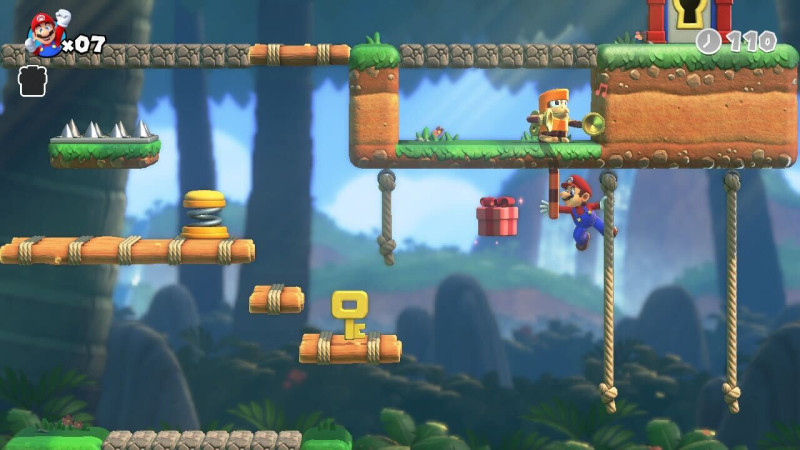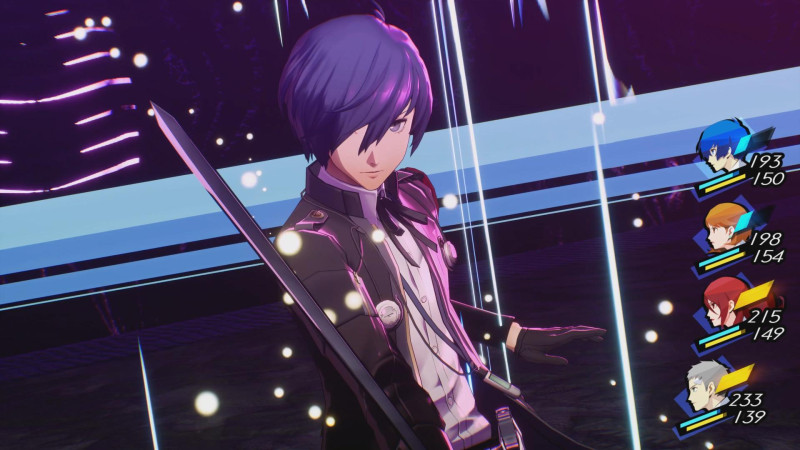Even though Mario is now known as the most iconic face in gaming, in his first appearance, 1981’s Donkey Kong, he couldn’t even get his name in the title. That was corrected in 2004 with the release of Mario vs. Donkey Kong, a side-scrolling puzzle game designed to carry on the legacy of the classic arcade cabinet. Twenty years later, that outing has been reimagined for the Nintendo Switch, and Mario’s rivalry with Donkey Kong – as well as the gameplay – holds up surprisingly well.
After the local toy store runs out of Mario toys, Donkey Kong goes on a rampage at the toy factory, leaving with a sack full of toys and Mario in hot pursuit. As Mario, you’ll go through a series of levels with two parts. In the first section, you need to retrieve a key that unlocks the door Donkey Kong has snuck through. Then, you have to recover the toy he’s left behind. It’s a simple formula that the game relentlessly iterates on, creating fresh scenarios in every level to keep gameplay engaging.

In the four worlds I got the chance to go hands-on with, I was always delighted and surprised by the puzzle design. With only six stages in a world, there’s a huge amount of room for variety with that area’s gimmick. For example, Donkey Kong Jungle is full of ropes to climb, a la Donkey Kong Jr., but each stage introduces a new enemy, like rhinos you can ride on or monkeys with tails you can climb. Not every level is challenging, but they were all engaging, which is a far more difficult feat. Even when I put together the solution after a quick glance at the stage, it was always enjoyable to run, jump, and climb my way to the end thanks to the diversity and creativity of the design.
As someone who did not experience the original on Game Boy Advance, I was particularly surprised to learn just how much the platforming impacts gameplay. True to his brand, Mario has a lot of mobility, and between a pivot jump, a handstand, and a triple jump, I was able to make my way through levels in ways that almost seemed unintended, skipping sections with precise leaps. These moves never break the game, however, and the most challenging puzzles require more brainpower than dexterity, so it’s just an added touch for those who choose to engage with it. Regardless, it makes me feel smart, which is ultimately the goal of the puzzle genre.
The Switch version of the game includes modern graphics and music (shout-out to the saxophones in World 1), but Nintendo has added new content as well. There are two new worlds, Slippery Summit and Merry Mini-Land, bringing the total from six to eight. It also includes a casual mode, which eliminates the timer and adds checkpoints to the level, so when Mario dies, he just bubbles back to the flag instead of resetting the whole level. The beauty of this mode is that it doesn’t diminish the challenge of the puzzle, just the challenge of the platforming, which could certainly trip some people up. This is especially true with later, longer levels, where I could see the value of casual mode if someone doesn’t want to re-do the same section over and over after dying. The game also includes a co-op mode, adding a playable Toad for anyone who needs extra help or wants to share the experience with a friend.
Going into this preview, Mario vs. Donkey Kong was admittedly not a huge blip on my radar, but after playing a few worlds myself, I’m very excited to see the full game’s release. With thoughtful, unique puzzles, added levels, and accessible casual and co-op modes, this 2004 title feels brand new.



